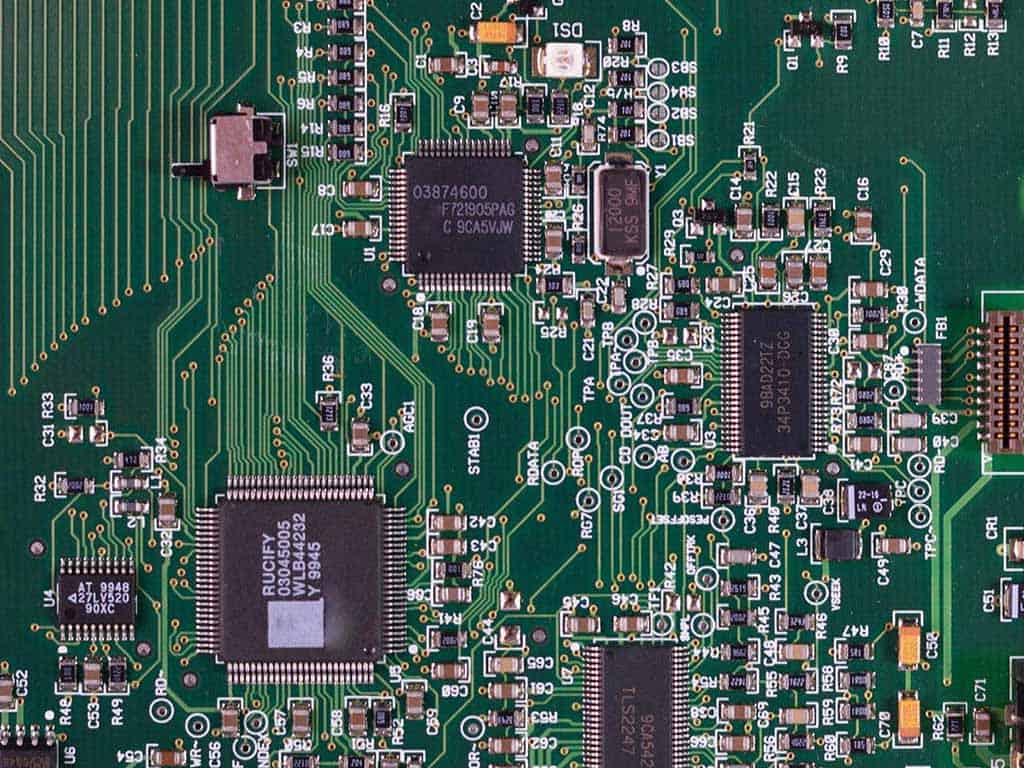Exploring the impact of AI in electronic design Electronic Products & TechnologyElectronic Products & Technology
Table Of Content

The presence of steel, magnets, and copper will impact product weight and its distribution within the device, which needs to be considered in the simulation of mechanical and thermal performance. Consumer electronics will see an increase in device personalization, thanks to artificial intelligence (AI) and data processing at the nanoscale. Wearable devices will become more integrated with the human body, providing advanced monitoring and real-time interactions with other connected devices. Manufacturers and designers must therefore ensure that their products are rigorously tested and can undergo conformity testing to industry standards by the appropriate bodies.
Electronic Design and Applications Faculty Members
Data from a report by the “International Journal of Electronic Quality Management” indicates that AI-driven testing strategies can reduce testing cycles by up to 30%, showcasing AI’s efficiency in ensuring product quality. Since 1997, he works as an independent consultant, trainer and designer in the field of analog circuit design. Over the past 38 years, he developed analog electronics for instrumentation and communication systems and carried out many training courses on analog electronics. Since 2016 Anton Montagne is coaching students and giving lectures and masterclasses "Structured Electronics Design" at the Delft University of Technology.
PCB Design & Layout
Circuit simulation plays a strategic role in the schematic capture phase of EDA workflows. Beyond these elements, integrated circuits (ICs) and microcontrollers are often used to manage complex tasks within advanced electronic systems. The careful selection and use of these components are crucial in the design process to ensure the functionality and reliability of the final product. In that context, it’s becoming more difficult to deliver the appropriate power over the “last inch” of the power-delivery network (PDN) that stretches over the printed circuit board (PCB) to the load itself.

Electronics in Mobile Devices and IoT
Master the analysis and design of electronic systems with CircuitLab's free, interactive, online electronics textbook. As a beginner, it can be challenging to do this from scratch, so it is helpful if you start with a pre-designed guided project that offers step-by-step instructions. Once you get the hang of how it all works, then you can start creating your own projects. Where an analog signal might look like a smooth wave, a digital signal will look more jagged. Because digital circuits do not deal with a continuous signal, they require less bandwidth. These types of circuits are used when more discrete signals are needed for more logical operations, such as computers and microcontrollers.
The integration of AI into electronic design and manufacturing presents a multifaceted opportunity for innovation, efficiency, and quality enhancement. Supported by empirical data, these points underscore the profound impact AI is poised to have on the electronics industry. As we navigate this technological evolution, addressing ethical considerations and investing in workforce development will be pivotal in realizing the full potential of AI in shaping the future of electronics and design. Anton Montagne (Leiden, The Netherlands, 1953) received his master's degree in 1984 at the Delft University of Technology. In 1983, he joined Philips Semiconductors in Nijmegen where he designed analog integrated circuits for audio and video applications.
Keysight Introduces Next-Generation Radio Frequency Circuit Simulator for RFIC Chip Designers - In Compliance
Keysight Introduces Next-Generation Radio Frequency Circuit Simulator for RFIC Chip Designers.
Posted: Fri, 26 Apr 2024 12:36:10 GMT [source]
Providing several outputs from a single IVR can also reduce the complexity of “power trees” used by FPGAs and other chips that feature several internal power domains, said Krishna. Krishna said that bringing the voltage regulator closer to the processor’s pins can curtail power losses on the PCB by a factor of 10, raising efficiency at the system level by up to 5%. Empower said the IVR integrates most of the input and output capacitors crowded around the processor so that it can deliver load steps to the processor significantly faster. That reduces the amount of voltage drop and how long it takes to recover from large currents rushing into the load. Mixed-mode circuit simulation lets you simulate analog and digital components side-by-side. All of these components, such as diodes, inductors, and resistors are all connected using wires, which is what allows the charge or electricity to flow between them.
This is because designers can achieve the desired performance of a circuit in many ways. Together, theoretical concepts, circuit topologies, electronic devices, their operating conditions, and the system's physical construction constitute an enormous design space in which it is easy to get lost. For this reason, analog electronics often is regarded as an art rather than a solid discipline. Electronic design and applications is a vital area of electrical engineering, encompassing the experimentation, design, modeling, simulation and analysis of single devices or circuits as well as complete signal processing systems.
Extractive Industry & Manufacturing
These types of circuits often deal with more complex data because a continuous signal has more data in it. From our mobile phones and our computers to our electric toothbrushes and coffee machines — there are devices all around us that are designed using electronic circuits. Depending on the type of service provided, we use various testing equipment and tools, such as a laboratory power supply, an oscilloscope, a signal generator, a logic analyzer, and different types of multimeters. By analyzing data from sensors and machines, AI can identify potential issues before they become problems, reducing downtime and increasing productivity. For example, AI-powered predictive maintenance can detect anomalies in machine performance, allowing engineers to address issues before they cause equipment failures or production delays.
Simulation and Verification
Compliance is in fact an ongoing process that requires attention to evolving legislation and collaboration with regulatory and certification entities. Firmware is the basic program that instructs the hardware on how to operate, often integrated directly into the electronic components. Its development requires extensive knowledge of the hardware platform and skills and experience in low-level programming. In electronic design, software and firmware development is the functional heart of the system, essential for the interaction and control of the hardware.
Fabricators generally provide libraries of components for their production processes, with simulation models that fit standard simulation tools. One of the most famous was the "Berkeley VLSI Tools Tarball", a set of UNIX utilities used to design early VLSI systems. Widely used were the Espresso heuristic logic minimizer,[6] responsible for circuit complexity reductions and Magic,[7] a computer-aided design platform. Another crucial development was the formation of MOSIS,[8] a consortium of universities and fabricators that developed an inexpensive way to train student chip designers by producing real integrated circuits. The basic concept was to use reliable, low-cost, relatively low-technology IC processes and pack a large number of projects per wafer, with several copies of chips from each project remaining preserved. Cooperating fabricators either donated the processed wafers or sold them at cost, as they saw the program as helpful to their own long-term growth.
AI-driven design tools have introduced a level of optimization in product development that was once beyond reach, resulting in products that are not only more efficient but also more aligned with goals. The predictive maintenance capabilities of AI have shifted manufacturing processes, reducing downtime and increasing productivity. However, these advancements also come with their set of challenges, including the need for continuous learning and adaptation among professionals to keep pace with rapidly evolving technologies. Altair’s solution enables engineers to collaborate on all aspects of logical, physical, thermal, electrical, and mechanical design, from concept to manufacturing, and access all of these tools under one common licensing model. This open-architecture platform enables companies to integrate and collaborate across multiple design disciplines, driving better decision-making through simulation.
We check their performance under corresponding operating conditions and run some tests required for product certification. AI algorithms require vast amounts of data to learn and make accurate predictions, and the quality of this data is crucial. The industry must invest in collecting and labeling high-quality data to ensure that AI-powered tools can make accurate predictions and decisions. The first trade show for EDA was held at the Design Automation Conference in 1984 and in 1986, Verilog, another popular high-level design language, was first introduced as a hardware description language by Gateway Design Automation. Simulators quickly followed these introductions, permitting direct simulation of chip designs and executable specifications.
Output voltages on each of the power rails are programmable from 0.5 to 2.5 V. The IVR also features ultra-fast transient response with a voltage drop of under 20 mV through a load step. Though electronic circuit design is considered a complex and extensive process, we are going to break it down for you to help you get a basic understanding as a beginner. So, an electronic circuit is simply the arrangement of various electronic components that are set up in such a way to serve a specific function or task.
The unique combination of ECE's educational program, and the leading edge fabrication and testing facilities provides a full cycle exposure, from concept to product realization. CircuitLab provides online, in-browser tools for schematic capture and circuit simulation. These tools allow students, hobbyists, and professional engineers to design and analyze analog and digital systems before ever building a prototype. Online schematic capture lets hobbyists easily share and discuss their designs, while online circuit simulation allows for quick design iteration and accelerated learning about electronics. The best way to get started with circuit design is to jump right in and start playing around with pre-designed step-by-step circuit design projects and prototypes.
Comments
Post a Comment